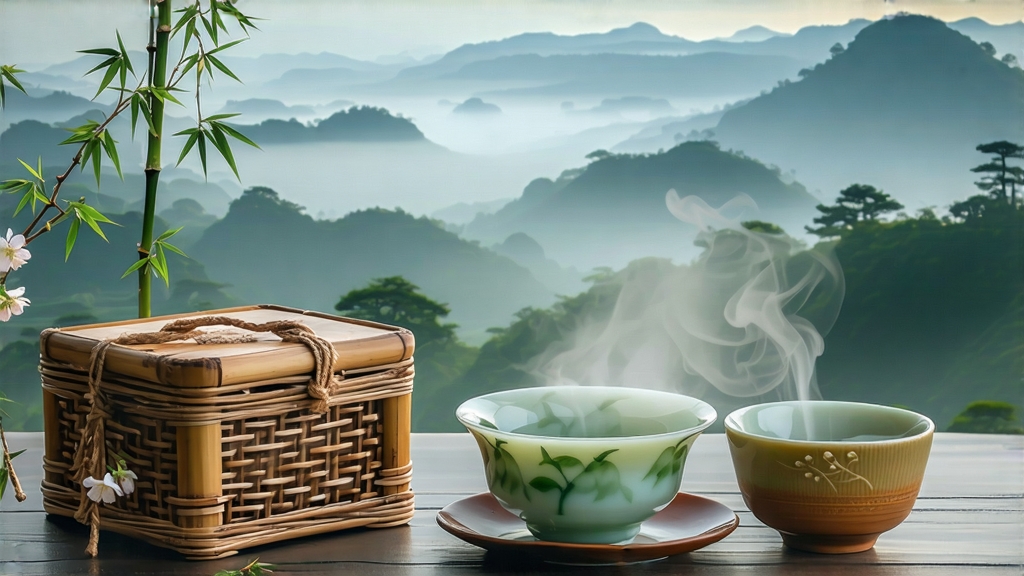
Tucked between the mist-laden banks of Taihu Lake and the fruit-tree-dotted hills of Dongting Mountain lies the birthplace of one of China’s most fragrant green teas—Biluochun. Its name, literally “Green Snail Spring,” hints at the tea’s tight spiral shape and the season in which it is plucked. To the uninitiated, Biluochun may look like tiny jade snails; to the seasoned taster, it is a cup of early spring itself, releasing layers of orchid, peach kernel, and faint marine minerality in a single sip. This article invites international tea lovers to journey through the history, micro-terroirs, craftsmanship, brewing science, and sensory etiquette that elevate Biluochun from a regional curiosity to a global benchmark for delicate green tea.
-
Historical whispers from the lake
The first written record appears in the Tang Dynasty (618-907) treatise “Tea Canon,” yet Biluochun’s fame crystallized during the late Ming and early Qing courts. Legend claims a tea picker ran out of basket space and slipped the fresh buds into her front apron; the warmth of her body triggered an accidental light oxidation, releasing an intoxicating perfume that startled mountain monks. The Kangxi Emperor, touring the lower Yangtze in 1699, sampled the tea, found its curled shape reminiscent of a snail shell harvested in spring, and christened it “Biluochun.” Imperial patronage turned a local monks’ beverage into tribute tea, carted northward in bamboo-lined chests cushioned with orange peel to maintain moisture and fragrance. -
Micro-terroir: where rock, lake, and blossom intersect
Authentic Biluochun comes only from Dongting East and West Mountains, two limestone islands rising from Taihu Lake in Jiangsu Province. The lake’s vast water surface moderates temperature, creating nightly fogs that slow photosynthesis and concentrate amino acids—especially L-theanine—inside the buds. Meanwhile, fruit orchards—peach, plum, apricot, and loquat—intercrop with tea bushes. Petals fall, decompose, and inoculate the soil with floral microbes that migrate into the leaf surface, explaining the tea’s natural blossom note impossible to replicate elsewhere. Altitude is modest (100–300 m), yet UV intensity is softened by fog, yielding buds so tender that one kilogram needs 60,000–70,000 shoots. -
Cultivars within a cultivar
Although the original landrace is the small-leaf “Dongting群体种” (qunti zhong), clonal selections have emerged since the 1980s. The most respected are:
• Zaochun (Early-Spring) #1: buds appear 7–10 days ahead, delivering lighter body but higher orchid scent.
• Chunhua (Spring-Petal): bred for frost resistance, carries stronger peach note.
• Jinfeng (Golden-Peak): larger bud, designed for machine-aided plucking yet still pan-fired by hand to preserve curl integrity.
Each sub-cultivar is micro-propagated by cuttings rather than seed to maintain genetic consistency, yet all must be grafted onto 30-year-old Dongting rootstock to qualify for the protected geographical indication (PGI) seal launched in 2002. -
The 24-hour choreography of crafting
Plucking begins at 5 a.m. when dew still weighs down the bud, ensuring turgor pressure that will later translate into a tight spiral. Pickers take only the “single bud with half-open leaf” standard—an apical bud plus the first unfolding leaf no longer than 2.5 cm. Leaves are deposited in shallow bamboo trays to prevent compression; within two hours they reach the village workshop for “qingkui” (green-spreading), a 30-minute withering that reduces surface moisture by 15 % without enzymatic oxidation.
Kill-green is performed on iron pans heated to 180 °C. A 250 g batch is tossed, pressed, and rolled for 3–4 minutes; the artisan listens for the “popcorn crackle” that signals rapid water evaporation. Immediately the temperature is lowered to 70 °C and the true shaping begins: palms form a loose cage around the leaves, rolling them against the pan wall in a clockwise motion 30–40 times per minute. The spiral tightens; white hairs (pekoe) tuck inward, giving